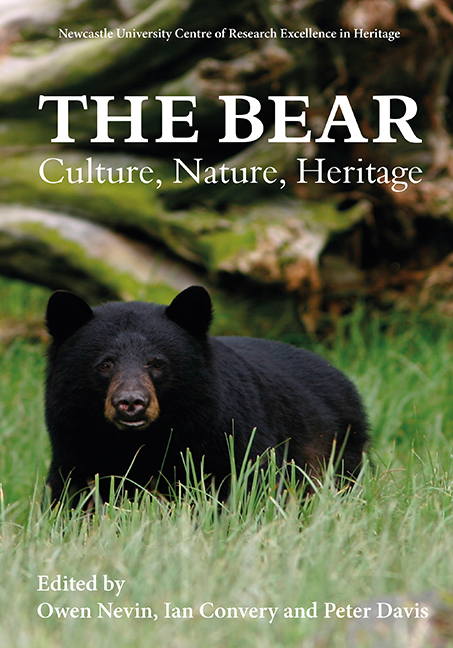Book contents
- Frontmatter
- Contents
- List of Illustrations
- Acknowledgments
- List of Abbreviations
- Foreword: The Bear: A Cultural and Natural Heritage
- Introduction: What is a Bear?
- Bear-People Interactions
- Bears in the Public Gaze
- Bear Biology, Management and Conservation
- Afterword: “It's Me Bear”: Reflections on a Unique Career Working with Bears
- List of Contributors
- Index
- Previous titles
7 - Knowing Individual Bears
Published online by Cambridge University Press: 21 March 2020
- Frontmatter
- Contents
- List of Illustrations
- Acknowledgments
- List of Abbreviations
- Foreword: The Bear: A Cultural and Natural Heritage
- Introduction: What is a Bear?
- Bear-People Interactions
- Bears in the Public Gaze
- Bear Biology, Management and Conservation
- Afterword: “It's Me Bear”: Reflections on a Unique Career Working with Bears
- List of Contributors
- Index
- Previous titles
Summary
Knowing individuals is important. It is hard to think of a more open-ended truism with which to start a chapter on knowing individual bears, but for behavioural ecologists, it is not only important, it is essential. As Barrie Gilbert notes in the foreword to this volume, the consequences of ‘not knowing’ individual bears and/or ‘their place’ can be serious. Whether that knowledge of individuals is applied in the academic pursuit of ethology (the study of behaviour in wild animals), as a naturalist guide within the ecotourism industry or to improve husbandry in an agricultural setting, including bear farming for bile across China and southeast Asia (see Chapter 8, this volume), it draws on a deep history and heritage. In this chapter, we outline the history and trajectory of bear identification and in doing so reflect on antecedents of human/other animal relations that span millennia.
Our behavioural research with brown bears in Glendale Cove on Knight Inlet in British Columbia began in 1996 and has continued over a period of more than 20 years in partnership with Knight Inlet Lodge (KIL), a commercial bear viewing lodge based in the cove. While not unique, this long-term commitment to research by a commercial partner offers a model by which generational scale studies can be conducted beyond the boundaries of parks and protected areas, which, after all, is where most wildlife resides. As Western (2015) notes, globally most biodiversity lives outside of protected areas, though it is undoubtedly richer within protected areas (Gray et al 2016). This has profound implications for how we interact with wildlife, and in particular how people relate to charismatic megafauna.
Ethological studies at KIL have included investigation of the impact of viewing activities on the foraging energetics of bears (Nevin 2003; Nevin and Gilbert 2005b, 2005c); temporal-spatial refuging (Nevin 2003; Nevin and Gilbert 2005b, 2005c); breeding behaviour (Nevin and Gilbert 2005a); and the selection and use of mark trees in olfactory communication (Clapham 2012; Clapham et al 2012, 2013, 2014). In parallel, GPS telemetry and genetic sampling have addressed spatial movement, habitat use, connectivity, dispersal and relatedness, while social science research has explored the relationship between people and bears, and their cultural meanings (Nevin et al 2012, 2014). Much of the detailed behavioural study on the site is facilitated by the maintenance of a register of individually identifiable bears of known age-sex class.
- Type
- Chapter
- Information
- The Bear: Culture, Nature, Heritage , pp. 77 - 90Publisher: Boydell & BrewerPrint publication year: 2019



